While responding to a question we received from a researcher via our Ask a Librarian service about an ancestor’s arrival to Melbourne in the 19th century, I came across a shipboard diary from the voyage of the Anna, which sailed to Melbourne from Liverpool in 1852 with 284 passengers aboard.1 It’s not uncommon to come across diaries of voyages; for those who were literate and had means enough to purchase paper and ink, writing a diary of their voyage was a good way to pass the time.2

Often, they were written to be shared with family and friends back home, and act as travel guides for any who were considering a similar journey. They provide insight into the journey and life aboard a ship, and often include amusing accounts of other passengers and shipboard antics. They also sometimes recount the passenger’s arrival to their destination and impressions of their new home.
The diary, written by steerage passenger John Askew, was published in London a few years later: Voyage to Australia and New Zealand: with a summary of the progress and discoveries made in each colony. Askew actually disembarked the Anna in Adelaide, but eventually made his way to Melbourne, and his observations give a fascinating window into the city in 1852.
First impressions
Askew recounts arriving at Sandridge (now Port Melbourne) and walking the 2 miles to Melbourne in the rain. After nearly being robbed by some gold diggers, he came across the tent city known as Canvas Town (later to become Emerald Hill, now South Melbourne), which had sprung up to temporarily house new migrants until they could find permanent lodgings.3 Askew then spent a pleasant night at Tankard’s Temperance Hotel where he enjoyed roast beef and mutton, stew, potatoes and vegetables in their commodious dining room.4
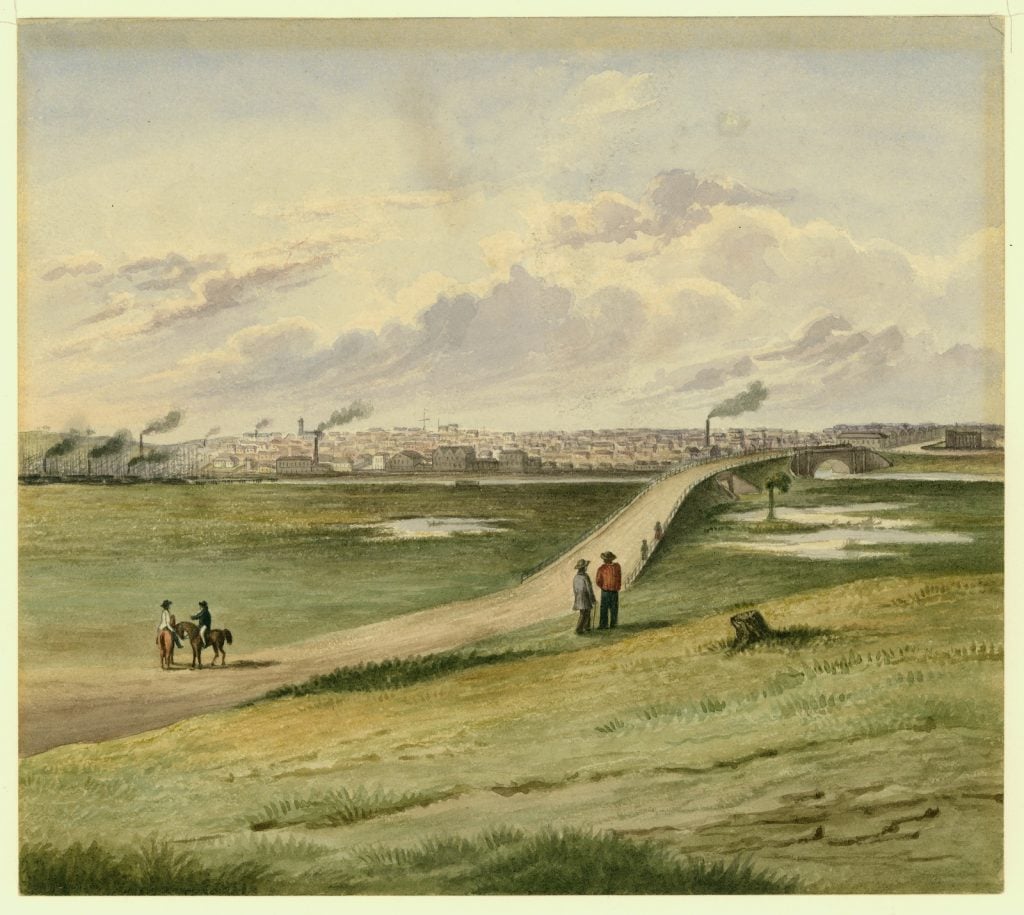
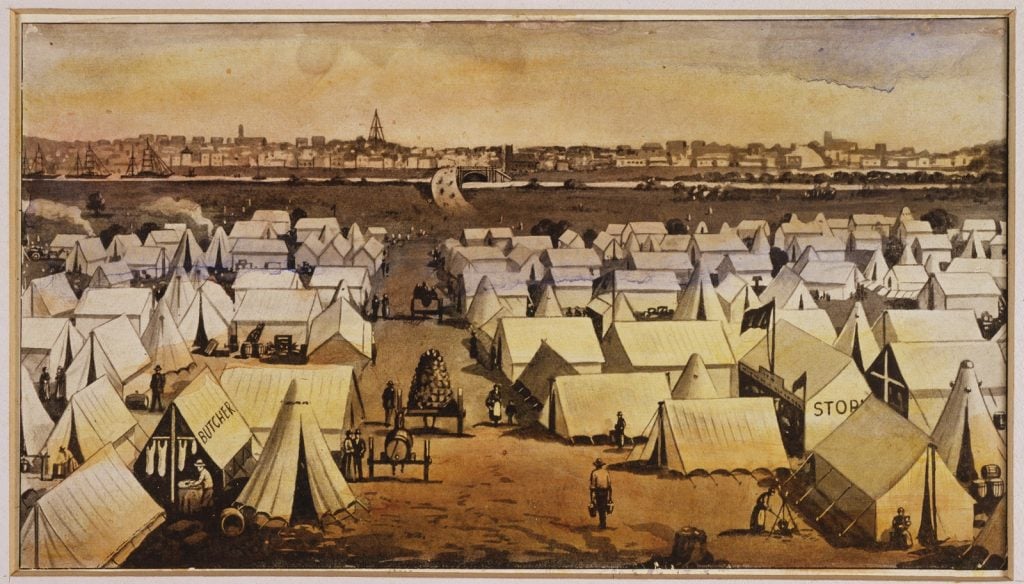

Askew was impressed with the city, saying: ‘Melbourne itself is a wonderful place considering the short time it has been in existence…’ 5
Elizabeth Street, Great Collins Street, and Great Bourke Street, were each of them as crowded with people as Oxford Street or the Strand in London on the busiest time of day. Crowds of people were coming from every steamer that arrived at the wharfs from the bay, with their swags upon their backs ready to start for the diggings; and multitudes were hourly arriving from the diggings with long beards and sunburnt faces.6

While the unfortunate nickname Smellbourne (a playful alternative to Marvellous Melbourne)7 wasn’t coined until a bit later, Askew vividly describes the particular challenges of a rapidly growing city with inadequate rubbish disposal and no sewer system (a sewerage system didn’t eventuate until 1897):
In a few of the streets abortive attempts had been made at sewage and placing kerb-stones to the footpaths; but the mouths of the sewers were soon blocked up with filth… There could not be a more filthy city in the world than Melbourne was at that time… Sheep’s heads, plucks and other kinds of offal, were lying in a partially decomposed state in the mud-holes by the sides if the street. The stench from these fetid accumulations was intolerable, and you could scarcely walk anywhere in the City without having your olfactories saluted by the horrible odours emitted from the carcasses of animals and other nuisances… 8
The view from the flagstaff
Askew describes the best view of the city as from the high ground near the flagstaff – now the location of Flagstaff Gardens. The flagstaff was erected in 1840 to signal shipping activities in Hobsons Bay; it remained in use until the advent of the telegraph in 1857, but the name stuck. 9

He paints a vivid picture of the fledging city and the original features of the landscape on the cusp of being irrevocably changed by European settlement:
The surrounding country is level, and in some places thickly wooded. All the land near the city has that fine park-like appearance, when viewed from an eminence, which is peculiar to this part of Australia. Great numbers of milch cows roam on this park land, their owners paying nothing for the privilege… A splendid prospect of Hobson’s Bay, with all the vessels lying in anchor, can be seen from Flagstaff Hill. The shores of the bay in the direction of Geelong are thickly covered with a kind of scrub called tea-tree, somewhat like our cypress, and the whiter houses which peep out here and there from the dark masses of green foliage on the other side of the bay, in the vicinity of Brighton and St Kilda, add much to the beauty of the surrounding landscape.10

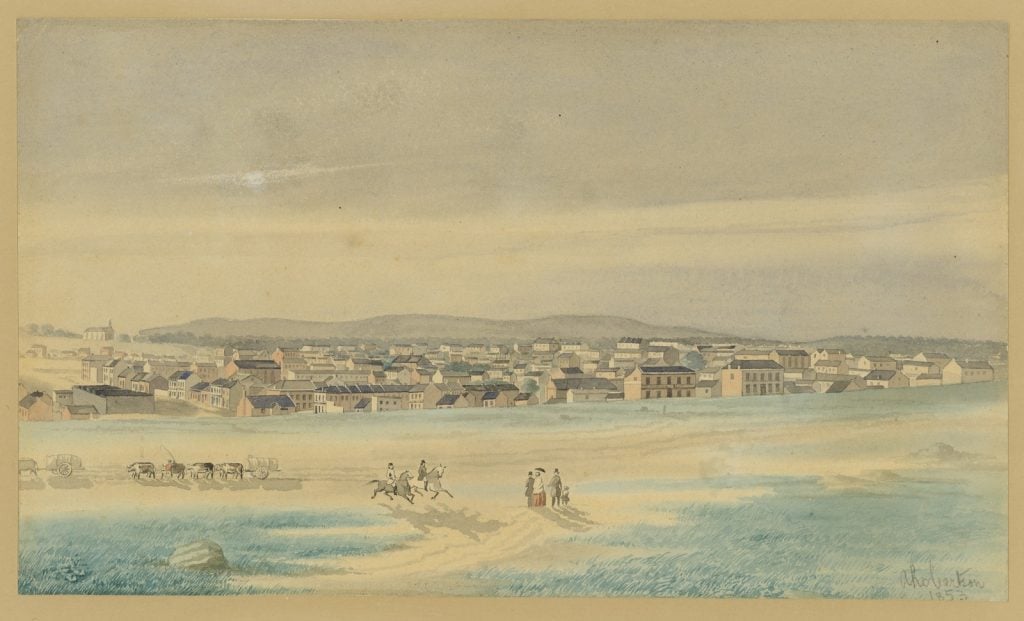
Provisions and industry
Askew’s journal goes into great detail about the types of provisions one could procure in Melbourne, and gives prices for some of the more common items. He also gives us insight into some of the more popular and lucrative occupations in the fledging city.
…. bread was 4 1/2d per lb; butter 2s 6d; cheese 3s 6d; potatoes 4d; apples 4 d each; oranges 6d each; cabbages 4 d to 6d each; board and lodging £1 5s to £2 per week… The Melbourne Green Market was badly supplied. Most of the potatoes, apples, and vegetables, were brought from Launceston. 11

The water brought into Melbourne from the Yarra Yarra river was the worst I ever tasted in Australia. It was occasionally as thick as pea-soup; and yet, the water in the river above the bridge seemed clear and that sold in the city was supposed to be brought from that neighbourhood. The water-carriers, however, were in no way particular, so long as it was water, they cared little from whence it came. Some of these men were making upwards of £3 per day, and anyone who could raise enough money to purchase a horse and a water-cart, and had perseverance enough to follow that kind of employer, was in a fair way of becoming independent. 12
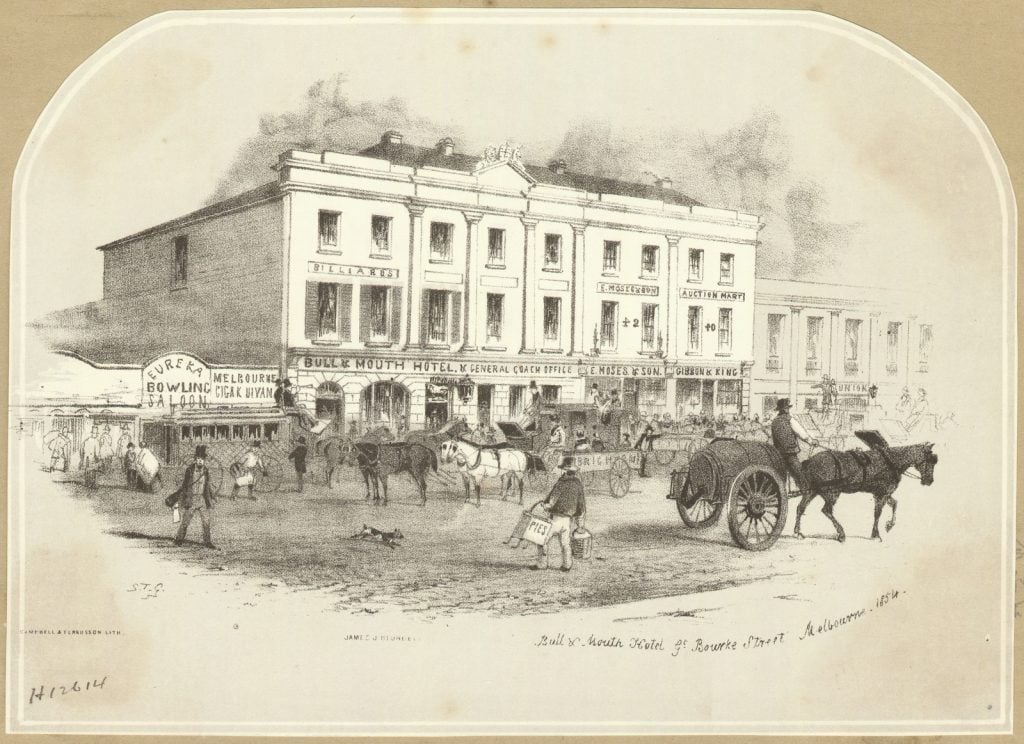
… good female servants [earned] from £30 to 40 per year, with the privilege of almost doing as they liked. Such was the scarcity of female labourers, that all who wished to keep their servants had to be careful how they used them. Many servant girls were far more independent, and had much more leisure time than their mistresses. 13
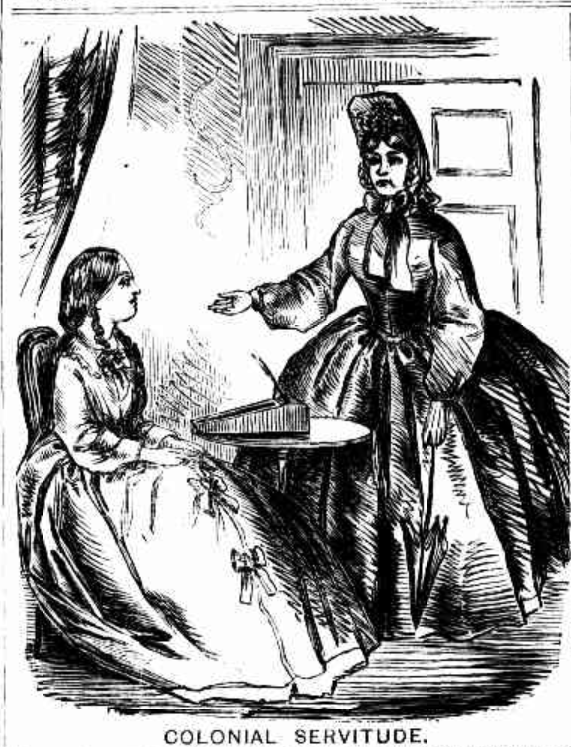
Caption reads: DISTINGUISHED FEMALE DOMESTIC ASSISTANT (they would call her a housemaid in England) — ‘Well Mum, if I engage you, I must be allowed to accept invitations for little tea parties, and that sort of thing, about two or three times a week.’
Gold, glorious gold
It’s uncanny how well Askew’s account compliments artwork in the collection by S T Gill, known for his often-amusing depictions of life on the diggings and in Melbourne.
Gold was as common in Melbourne as gingerbread at a country fair, and almost every tenth person you met in the streets has gold dust or nuggets in his pocket. Wealth was rolling in by million, and population by thousands every month.14
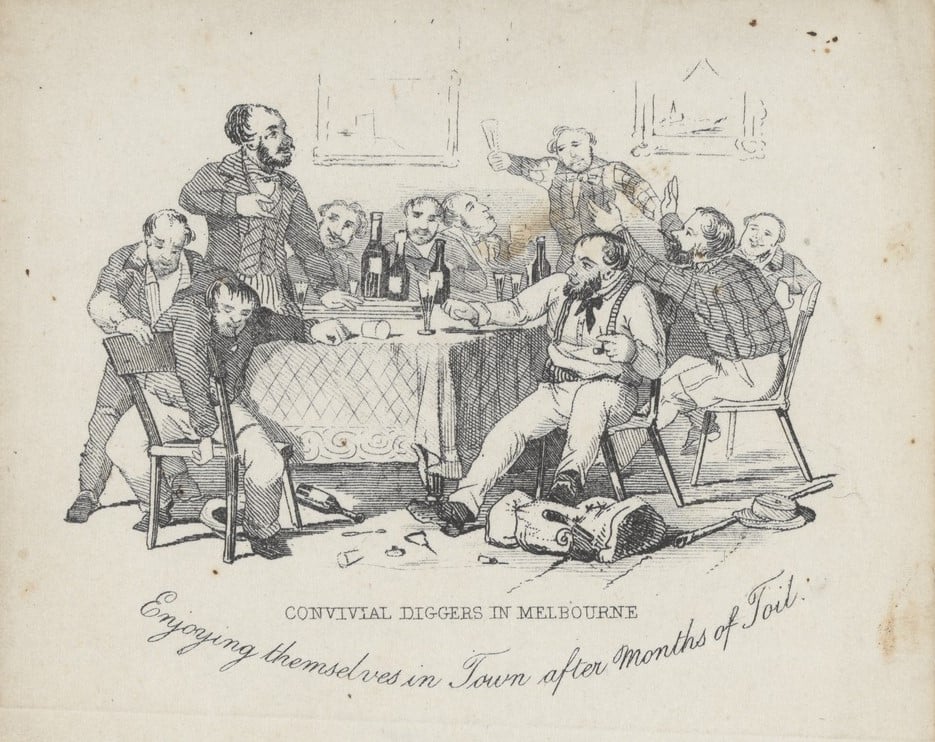
Such was the amazing amount of wealth which had fallen into the hands of the working classes, that society was turned upside down… The diggers filled the boxes at the theatre… A favourite actor or actress often got a few small nuggets thrown at them by their admirers.15
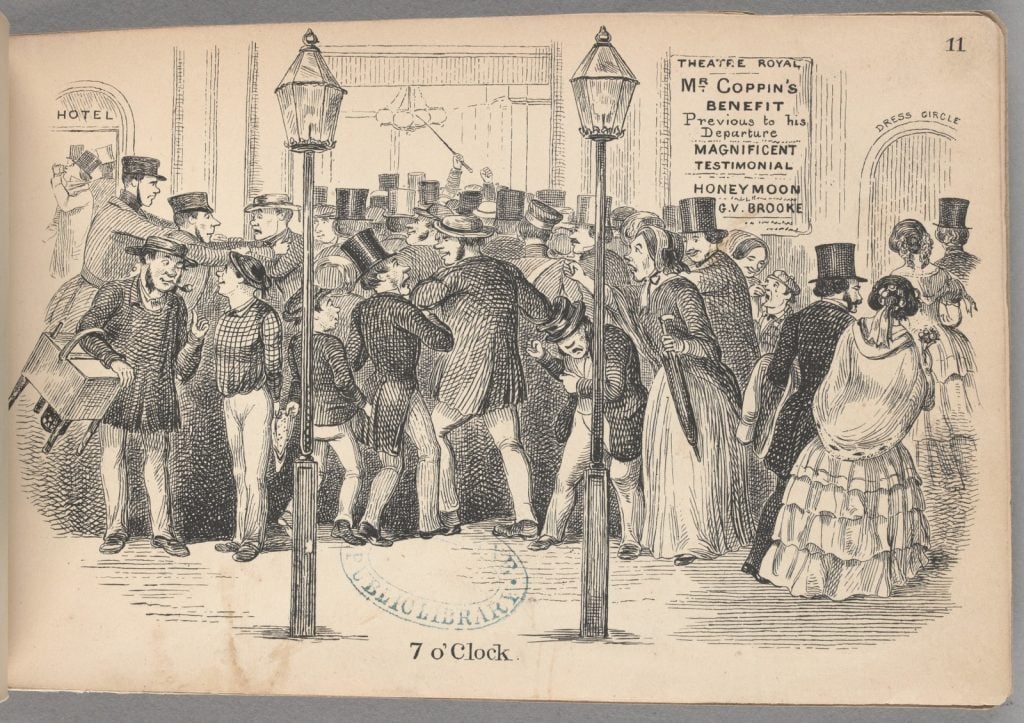
The weddings of diggers surpassed anything I have seen in Adelaide, both for eating and drinking and the numbers in attendance. Conveyances of all kinds were pressed into the services of those who were just entering into the married state. These were filled with men and women in the gaudiest manner, and bedecked with trinkets and jewelry. 16
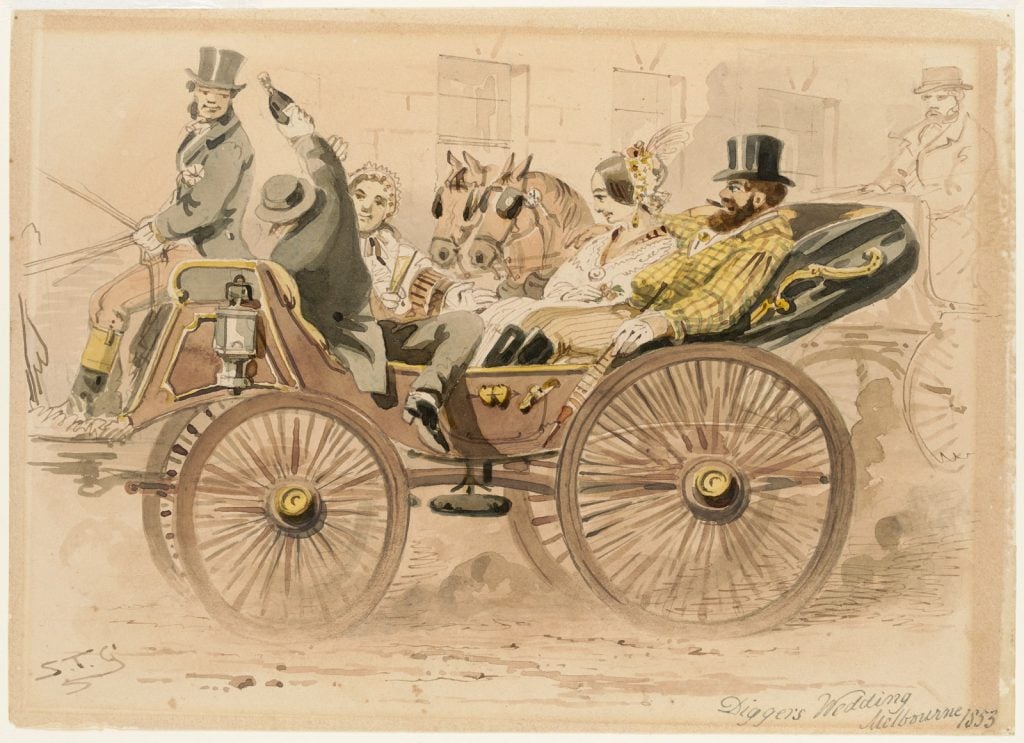
As he was preparing to depart Melbourne to continue his travels, Askew describes a stroll under a clear sky as the sun rose. His musings are uncannily prophetic:
Both time and place were peculiarly favourable for evoking a day-dream and speculative musings about the destinies of the future Melbourne… I thought that if I were permitted to take the same stroll on some fine morning of the year 1950, what changes would have come over the lovely scene before me! St Kilda, Richmond, Sandridge, Brighton, and even Williamstown may then be only known as parts of Melbourne.17
Little did he know what an immense metropolis Melbourne would become.
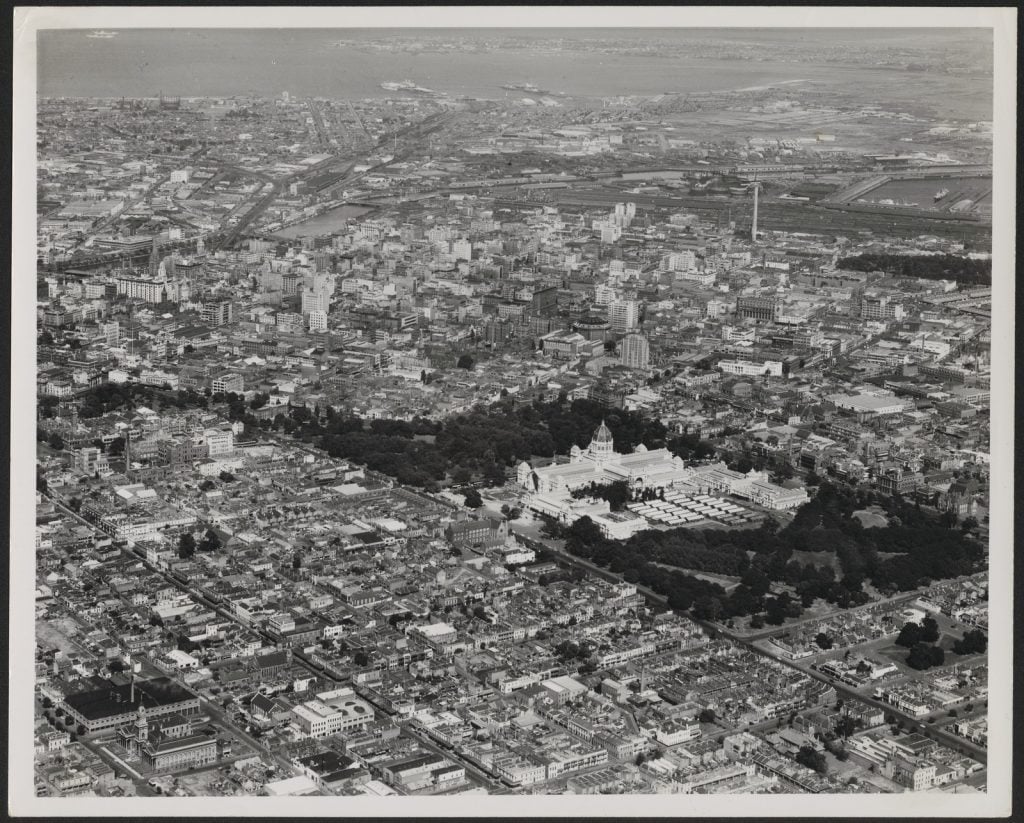
Further reading
Hassam, A, 1995, Sailing to Australia: shipboard diaries by nineteenth-century British emigrants, Melbourne University Press, Carlton, Vic
Hassam, A, (ed), 1995, No privacy for writing: shipboard diaries 1852-1879, Melbourne University Press, Carlton, Vic
Nicholson, I, 1998, Log of logs : a catalogue of logs, journals, shipboard diaries, letters, and all forms of voyage narratives, 1788 to 1988, for Australia and New Zealand and surrounding oceans, the author jointly with the Australian Association for Maritime History, Yaroomba, Q [ie Qld]
Information on researching Victorian assisted and unassisted passenger lists, outward journeys and crew lists can be found on our Victorian immigration and emigration research guide.
Information on researching ships journeys, including images of ships, can be found on our Ships and shipping research guide.
You may also like:
- We hold three other accounts of this particular voyage in our Manuscripts collection, and one of these has been digitised.
- A search on our online catalogue for ‘ship board diaries’ in the Manuscripts collection returns just over 200 diaries held in the Library collection
- https://blogs.slv.vic.gov.au/our-stories/canvas-town-a-floating-city-devoured-by-the-sun/
- Askew, J, 1857, Voyage to Australia and New Zealand : with a summary of the progress and discoveries made in each colony, [s.n], London, pp 130-33
- As above, p 142
- As above, p 136
- eMelbourne, 2008, Marvelous Melbourne, viewed 20 May 2024, <https://www.emelbourne.net.au/biogs/EM00906b.htm>
- Askew, J, 1857, Voyage to Australia and New Zealand : with a summary of the progress and discoveries made in each colony, [s.n], London, p 138
- eMelbourne, 2008, Flagstaff Hill, viewed 20 May 2024, <https://www.emelbourne.net.au/biogs/EM00580b.htm>
- Askew, J, 1857, Voyage to Australia and New Zealand : with a summary of the progress and discoveries made in each colony, [s.n], London, pp 141-42
- As above, pp 149-151
- As above, pp 143-44
- As above, p 149
- As above, p 154
- As above, p 156
- As above
- As above, p 158


Can anyone tell me the name of the ship. Captain Fredrick Standish ( later chief commissioner of Police) came Melbourne and anything else about his early days in the colony. Thank you
Hi David, thank you for your enquiry. I have lodged it with our Ask a Librarian service and someone will be in touch – Kylie
A fantastic insight into life in early Melbourne. Thank you
Is there any further information on John Askew.
What was the reasons for his taking the long voyage to Australia? Did he visit the diggings?
Did he stay or simply move on to NZ. Where did he come from in England?
Hi Roger,
Thank you for your enquiry. Askew’s diary was published after he had returned back to his hometown of Brighton, England. The diary was published in 1857.
The preface to Askew’s diary recounts the following:
“I left home an invalid, with a faint hope of surviving the voyage; but through the goodness of Divine Providence, I was permitted to return to my native land in perfect help.”
His diary commences:
“In the latter part of 1851, I met with a companion equally enthusiastic with myself, and we determined to visit that far-off country in the southern hemisphere, called Australia.” p.2
Alas John did not visit the diggings but went onto to Sydney from Melbourne.
His full itinerary – Adelaide, Melbourne, Sydney (with a few little stops along the way), Newcastle, Maitland, then onto New Zealand.
Interestingly I cannot find any other biographical references to him (census, death record etc.) when I search genealogical databases such as Ancestry, though I will keep digging!
Regards,
Kylie
Fascinating! My ancestor left Birmingham UK in 1852 on board the Orpheus in order to participate in the Victorian gold rush. His journal is full of water-colour sketches of his experiences at the diggings, views of Melbourne in the period circa 1852–1870 etc.
Hello Peter,
As a one time resident of the old gold town of Beechworth, I wondered if the journal had any paintings etc or descriptions of Beechworth? Beechworth, being a major gold town in the late 1850s was previously known as Spring Creek and MayDay Hills
Thank you in advance
Gwyn Morris
Brisbane
(Ex Beechworth)
What an historical treasure! How wonderful to have such a direct connection to that time in Australian history.
Grateful to be able to read this fascinating article. The Victorian gold rush era fascinates me, especially the continuity of what is probably but a selected interpretation of events in that era. The finances raised from gold mining activities and licenses, and how it was specifically dispersed/squandered, is a subject that I find a source of special intrigue.
Great to read this well-compiled article of an era that pre-dated and enabled the Melbourne of today to evolve.
So pleased they worked on the sewerage issue before I was born.
Interesting information.
My GG Grandfather and family arrived in Hobson Bay in 1853. He wrote a letter to his former colleagues in the London Post Office just a few days after arrival, a transcript of which is in the SLV archives. He describes events on the voyage over and some fascinating experiences in the family’s first few days in Melbourne.
His name is Thomas Greenhall Atkinson and he went on to become the Clerk of Letters and Papers in the Victorian Parliament.
What a great illustration of life in Melb in word and pictures. I’d imagined it was a lot more rustic when my family arrived so found the post really interesting.